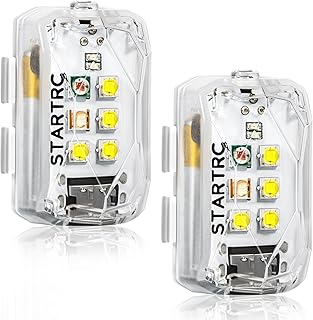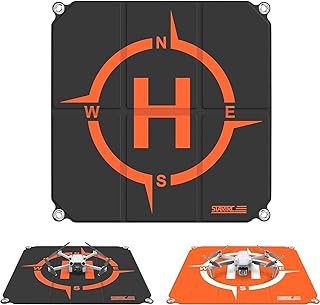STARTRC Drone: A Beginner's Guide
STARTRC offers a diverse range of drones for various levels of expertise, from beginners to seasoned pilots. This guide will help you understand the basics of using a STARTRC drone and get you started on your aerial adventures.
Choosing the Right STARTRC Drone:
* STARTRC F181: This drone is perfect for beginners with its user-friendly features and durability. It boasts a 6-axis gyro for stable flight, headless mode, and a range of up to 100 meters.
* STARTRC F117: A popular choice among beginners, this drone offers excellent camera capabilities and a longer flight time. It features a 1080p camera, a 4K camera version, and a flight time of up to 20 minutes.
* STARTRC F111: This drone is ideal for beginners looking for a more advanced experience. It offers features like GPS positioning, altitude hold, and one-key return, allowing for more precise and longer flights.
Before You Fly:
* Read the User Manual: Carefully review the instructions provided with your drone. It covers essential information about operation, safety precautions, and maintenance.
* Charge the Battery: Fully charge the drone's battery before your first flight.
* Choose a Safe Location: Find an open area with no obstacles, power lines, or tall buildings.
* Check for Wind Conditions: Avoid flying in strong winds, as it can affect control and stability.
Flying Your STARTRC Drone:
1. Power On: Turn on the drone and the remote controller. Ensure the drone's propellers are spinning freely.
2. Calibration: Follow the manual's instructions to calibrate the drone's compass.
3. Takeoff: Gently lift the drone off the ground and slowly gain altitude.
4. Control: Use the control sticks to maneuver the drone left, right, forward, backward, up, and down.
5. Landing: Slowly lower the drone to the ground and turn off the power.
Essential Features:
* Headless Mode: This feature allows you to control the drone's direction based on your perspective, regardless of its actual orientation.
* Altitude Hold: This feature keeps the drone at a constant altitude, making it easier to maintain stability.
* GPS Positioning: This feature allows the drone to track its location and return to its takeoff point automatically.
* One-Key Return: This feature allows you to return the drone to its takeoff point with a single button press.
Safety Tips:
* Always Fly Responsibly: Respect airspace regulations and avoid flying near airports, stadiums, or crowded areas.
* Keep the Drone in Sight: Do not fly the drone beyond your line of sight.
* Avoid Flying in Rain or Snow: Moisture can damage the drone's electronics.
* Never Fly Near Power Lines or Tall Objects: These can pose a risk to the drone.
Troubleshooting:
* Drone Not Responding: Ensure the battery is charged, the drone's power switch is on, and the connection between the drone and remote controller is strong.
* Drone Losing Altitude: Check for low battery, strong winds, or an obstruction in the drone's path.
* Drone Flying Erratically: Calibrate the compass and ensure the drone is not experiencing interference from other electronic devices.
Learning Resources:
* STARTRC Website: Visit the STARTRC website for FAQs, tutorials, and support information.
* Online Forums: Join online forums dedicated to drone flying to learn from experienced pilots and troubleshoot issues.
* YouTube Videos: Search YouTube for STARTRC drone reviews, tutorials, and flying tips.
Conclusion:
With the right drone, a little practice, and the tips provided in this guide, you can enjoy the exciting world of drone flying. Remember to always fly safely and responsibly. Happy flying!


